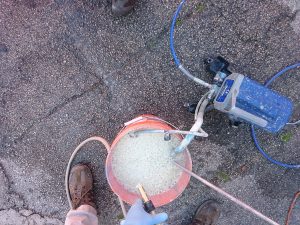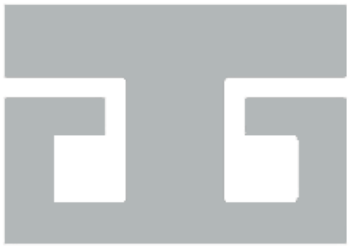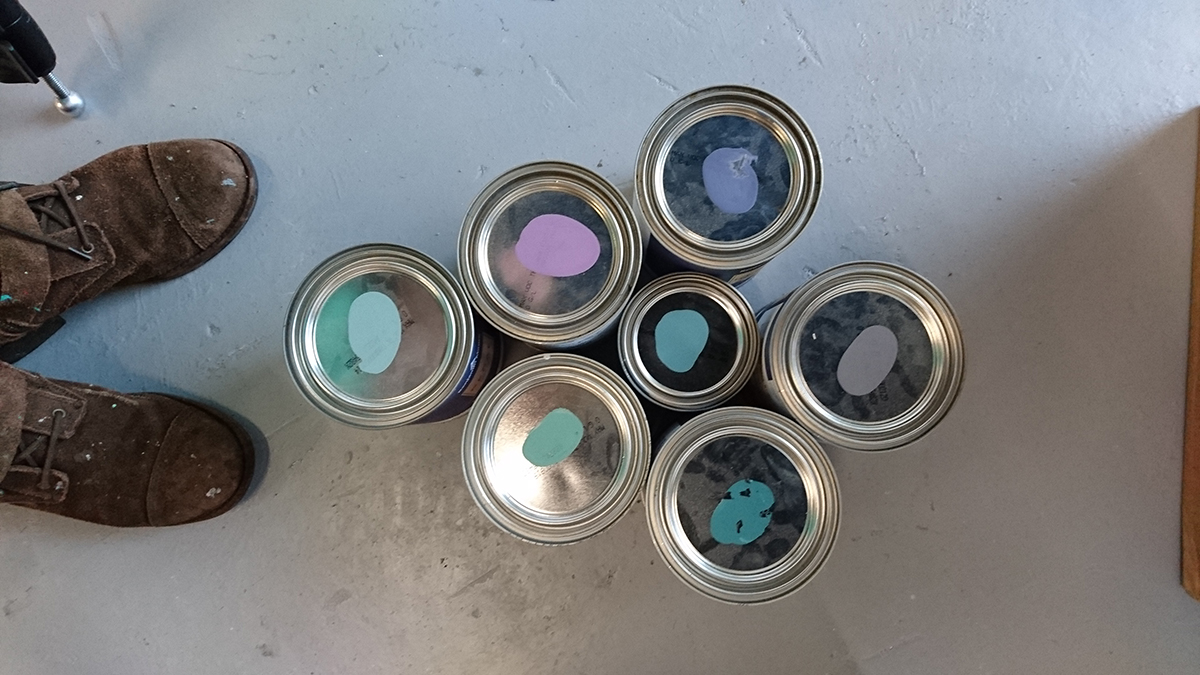The behind the scene of some of our mural projects

Many people are often curious about the process that is involved in creating art. Throughout our years we have learned that art is not a one size fits all method. The more that you explore art, the more you find new ways to do create it.
MIX COLORS
Our biggest lesson in being able to create large scale artworks and murals is to make sure that you have all your colors pre-mixed before you start. For large scale art, you can’t just always mix colors on site even though certain colors within the artwork will be mixed instantly. The artists has to decide what the largest mass with in the artwork is and pre-select those colors through paint guides. You can order all your colors with paint companies once you have chosen what they are.
CREATE A SKETCH
We often create a preliminary sketch to make sure we like the colors and composition. A sketch also allows for the client or organization hiring us to get an idea of what the final artwork will look like. This take a lot of practice! Get a sketchbook and practice, practice, practice! We like to create sketches a variety of ways from digital concepts, architectural renderings to mock-ups and physical small scale samples. Every project is unique so we can customize the sketch to be tailored to the most important aspects of the project.
IT’S OK TO EDIT!
Some of our best ideas are not the first ones. In an effort to ensure that our clients get exactly what they envision we often have to edit our first sketch and try a new idea out. It’s okay to go back to the drawing board, to see what can be eliminated or what can be added. Sometimes its great to be able to play around with different ideas and see how it looks. It’s all part of the process. The only way we continue to create some of the best art is to try different things.
GATHER MATERIALS
The key to creating great art is to make sure you give yourself enough time to plan. Normally we spend 2-3 days gathering materials, creating our work schedule, and making sure we have all equipment on site. Mural projects are very delicate and if you fail to properly plan you could miss a whole day of work.We have created many murals across the country now so we know what to expect and how to make our planning process faster.
PRIME AND PREP WALL
We prepare the surface to be painted on a variety of ways. Everything is dependent on what you are painting on. The most important aspect of ensuring quality and a long lasting artwork is to make sure that the surface is properly prepared to adhere to the molecules in the paint. We gather all technical specifications of the surface to make sure that we use the correct materials. Every surface is unique but from stucco to metal and glass, we have a solution for each material.
SKETCH ARTWORK ON WALL
Depending on the size of the wall and what the artwork is we may choose to use a grid method or a projector. The gird method has the most accurate result. This way works best for odd sized walls, small spaces, extremely large walls and areas without electrical sources.
START PAINTING!
Here comes the magic! Our favorite part! We now take our sections and get working. This is the longest part of the process and the one that comes together slowly. Layer by layer we built up the artwork over a series of rolling in the color, hand brushing, and color mixing. We sometimes take a break between the process to make sure that we don’t exhaust energy levels. It is vital to ensure that we can look at the artwork with fresh eyes and make adjustments as needed. People often underestimate what it takes to create artwork on such a large scale. Most of the time the work takes a physical toll on your body. We always make sure to yoga and a healthy smoothie to our routine each morning to make sure that our bodies are strong and healthy. Any time your body is exhausted it shows in your work. GREAT ART TAKES TIME. Schedule in breaks, exercise and good meals. Not only will it keep you energized and refreshed but the results can be seen in the out put of your work.
Well that’s it! We hope that this short list provided some perspective on our process. We may have missed a few elements here but that’s the mystery to art. Each process is unique to the artist. We study light shadows, perspective, form, and color to gain awareness on how to create realism. The foundation for great art is to study it. Art is a science. It is a journey to discover and each method will lead you to new results!


